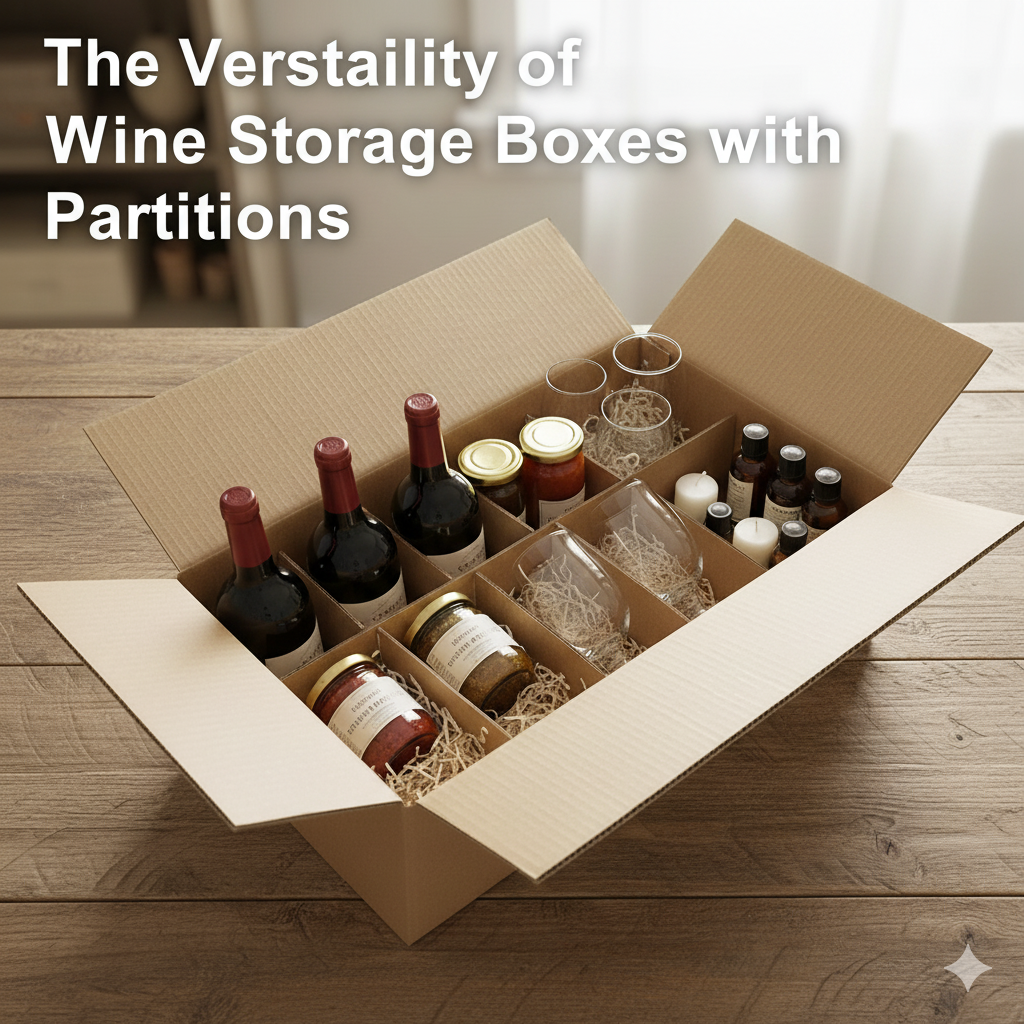
The Versatility of Wine Storage Boxes with Partitions
Wine storage boxes with partitions ensure that bottles are kept secure, organized, and easy to transport. These boxes are designed for both storage and shipping purposes. They compartmentalize each bottle to avoid contact, thereby minimizing the risk of scratches or breakage.
Both businesses and individual collectors use these boxes to manage their wine in a safe and efficient manner.
Why Wine Storage Boxes with Partitions Matter
Wine bottles are fragile and expensive to replace. Storing them in regular boxes increases the chance of impact damage. Partitions solve this problem by providing individual spaces for each bottle. This design keeps bottles from rolling, bumping, or cracking during movement.

Key Benefits of Wine Storage Boxes with Partitions
- Protection from impact and vibration during transit.
- Easy organization of different wine types or vintages.
- Stackable structure for space-saving storage.
- Reusable design for long-term use.
- Compatible with various bottle sizes
These features make partitioned boxes reliable for wineries, distributors, and collectors.
Types of Partitioned Wine Boxes
Partitioned wine boxes come in several formats:
- Corrugated cardboard boxes with pulp or paper dividers
- Molded pulp boxes with integrated compartments.
- Foam insert boxes for temperature-sensitive shipments
Each type offers a balance between cost, protection, and environmental impact. Cardboard boxes with pulp partitions are strong and recyclable. Foam inserts are better for long-distance shipping or extreme weather. Molded pulp boxes combine protection with sustainability.
Why Businesses Choose Partitioned Wine Boxes
Retailers and wineries use these boxes for efficient logistics. Bottles stay safe from warehouse to customer delivery. Each box supports consistent packaging standards and easy labeling. Businesses also benefit from fewer damaged shipments and lower replacement costs.
Distributors use partitioned boxes to manage bulk orders without repacking. This saves time and keeps products organized during handling. Some designs allow automated packing lines, improving productivity.
Why Collectors Use Partitioned Boxes
Collectors need safe, organized storage. Partitioned boxes help them categorize wines by brand, year, or type. The partitions prevent bottle contact, preserving labels and finishes. Many collectors use these boxes for both short-term and long-term storage.
Material Choices
- Corrugated cardboard: lightweight and strong for everyday shipping
- Molded pulp: eco-friendly and biodegradable
- Foam: best for temperature protection during long-distance shipping
The choice depends on the purpose. Cardboard and pulp are suitable for regular handling. Foam fits better for premium or international shipments.
Practical Use Tips
- Match the partition size to your bottle dimensions
- Avoid overpacking boxes
- Label boxes for easy identification during storage or delivery
- Keep boxes upright to maintain stability
- Store in a dry, cool environment to prevent moisture damage
Sustainability Factors
Molded pulp partitions are recyclable and compostable. Many businesses prefer them to reduce packaging waste. Corrugated cardboard also supports recycling programs. Foam options, while not fully biodegradable, are durable and reusable for multiple shipments.
Advantages Over Traditional Boxes
Without partitions, wine bottles knock against each other and often break during transport. Partitioned boxes eliminate this issue. They improve efficiency in both handling and stacking. The compartments also keep temperature more stable during transit, protecting wine quality.
Best Use Cases
- Online wine retailers shipping mixed cases
- Vineyards distributing sample packs
- Collectors organizing personal cellars
- Event planners transporting wine to venues
Wine storage boxes with partitions are reliable and adaptable. They minimize shipping damage, enhance handling, and assist in preserving wine quality. Whether utilized for commercial or personal purposes, they deliver organized protection that satisfies both safety and sustainability requirements.
